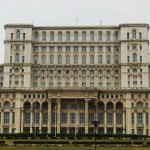Bucharest – the capital of Romania
Bucharest is the capital of Romania, a state in the south-east of Central Europe. As the legend has it, Bucharest was founded by a sheep herder named Bucur. However, historic documents testify that on an order of Hospodar of Wallachia Vlad Tepes on the site of today’s capital in 1459 Bucharest fortress was built. The fortress was a fortified post in the Lower Danube plain, which served as a barrier against Turkish attacks. In the second half of XV century Bucharest located in between the foothills of the Carpathian mountains and the Danube became an important economical and political center, and from the middle of XVI century – the main city of the country. Since 1569, Bucharest is the capital of Wallachia. By XVII century, Bucharest turned into one of the significant capitals of Europe, and in the end of XVII century became a crucial center of the spreading of culture in the Christian East. Bucharest’s development continued on a large scale after Wallachia and Moldova united in 1862 into one country; then it became Romania’s capital. Independence of Romania was declared in May of 1878 as the result of the Russian-Turkish war. In 1881 Romania became a kingdom.
Since the first day of the war between Hitler’s Germany and the USSR, Romania took sides with Hitler. In 1944, Romania’s people headed up by Patriotic anti-Hitler Front with a strong support of the Soviet Army overthrew fascist dictatorship in Romania, and at the concluding stage of the war Romania fought on the anti-Hitler coalition’s side.
In 1947, monarchy was dethroned, and Romania was proclaimed a Republic. According to the constitution adopted by the parliament in 1991, Romania is a democratic country with Bucharest as the capital. The president’s residency, the parliament and the country’s government are located here.
Prince’s Palace Complex – Curtea Domneasca – was the center of the old Bucharest. Contemporaries wrote with admiration about the splendor of the palace and its beautiful Italian garden. There were a majestic Throne Hall, chambers for audiences and ceremonies, the prince’s bedroom, the duchess’ rooms and other facilities in the palace. The prince’s palace includes also Domneasca church (the royal church), a former chapel of the palace, the oldest building of Bucharest constructed in the middle of XVI century.
Another construction of note is Manuc’s Inn (belonged to a wealthy merchant named Manuc-bei Marzayan). The building is restored. Square in its layout, it is surrounded by a gallery faced by around eighty rooms. Apart from the living quarters there were many stores and storehouses here, while the large yard could host caravans. Manuc’s inn was popular among the merchants, who brought goods to Bucharest from both the east and the west. This building gives a vivid impression about the commercial district of the old Bucharest.
Mihai Voda monastery and church are also among the most interesting monuments of Bucharest; they were constructed in XVI century on a hill on the right bank of the Dambovita River. The church was restored many times. As early as in XVI century it was considered to be one of the most beautiful buildings of Bucharest.
Among the Medieval monuments it is worthy to mention Doamnei church built in XVII century. On Stavropoleos street there is a church of the same name. It is a genuine gem of Romanian architecture of XVIII century. The portico of the church with woven gracious columns is especially fascinating.
Many streets, situated in the vicinity of the place where the prince’s palace used to stand, kept their old names – Kovac Strada (Blacksmiths Street), Shelar Strada (Saddlers Street). Lipscani street has kept its name since XVIII century; it originates from Lipsk –– Romanian pronunciation of the German city of Leipzig. Merchants’ shops with goods brought from Leipzig were numerous on this street. Even today there are many small shops mingled with modern stores here.
December 30 Street used to be called the Great Postal Street in the past. It received its present name in commemoration of the greatest event in Romanian history: on December 30, 1947, monarchy was dethroned and People’s Republic was proclaimed.

